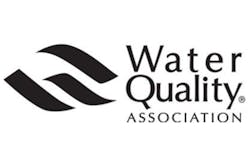Certification Action Line – Questions – July 2013
Answers to these questions appear online at www.watertechonline.com/certification-action-line.
Certification Action Line features questions and answers typical of those appearing in Water Quality Association (WQA) certification examinations. Some answers may not satisfy everyone or every condition.
1. The configurations used for reverse osmosis membranes in water treatment products is (are):
a) spiral wound
b) hollow fiber
c) tubular
d) plate-and-frame
e) all of the above
2. Plate and frame membrane systems:
a) provide accessibility to the membrane for inspection and cleaning
b) require a large amount of high-pressure hardware
c) are used more for membrane development testing than for commercial applications
d) all of the above
3. Tubular membrane systems:
a) utilize porous tubes up to one inch in diameter
b) contain a higher amount of membrane area compared to flow volume than other membrane configurations
c) collect permeate on the inside of the tubes
d) all of the above
4. Hollow fiber membrane systems:
a) are the latest design for membrane configurations
b) seal the ends of the hollow membrane fibers in an epoxy block, which is then cut through to expose the hollow ends of the fibers
c) function by applying pressurized feedwater to the inside of the fibers and collecting permeate at the outside of the fibers
d) allow for turbulent flow across the membrane surface and are most easily cleaned
e) all of the above
5. Spiral wound membrane systems:
a) provide uniform flow through the element
b) promote turbulence across the membrane surface
c) are the most commonly used membrane configuration for water treatment
d) b and c
e) all of the above
6. The "brine seal" in RO membrane element configurations serves the purpose to:
a) prevent brine from passing through the membrane element
b) prevent brine from fouling the membrane
c) prevent water from by-passing the element
d) provide lower TDS permeate
7. Plastic spacing material conducts feedwater between the envelopes of spiral wound RO membrane configurations. The feedwater spacing material is designed to also:
a) prevent the downstream unraveling or telescoping of the membrane leaves
b) promote turbulence in the feedwater
c) hold back feedwater so that a portion of it will permeate through the membrane
d) all of the above
8. Permeate flow rate, in RO operations, divided by feedwater flow rate is a measure of:
a) permeate recovery
b) efficiency of system operation
c) likelihood of scale formation from the feedwater concentrate
d) all of the above
9. RO system recovery affects permeate quality. As recovery becomes higher, the permeate quality becomes __________.
a) higher
b) lower
10. The upper limit to RO recovery is often governed by:
a) membrane life
b) risk of scale formation
c) solubility of concentrate salts
d) available pretreatment
e) all of the above
